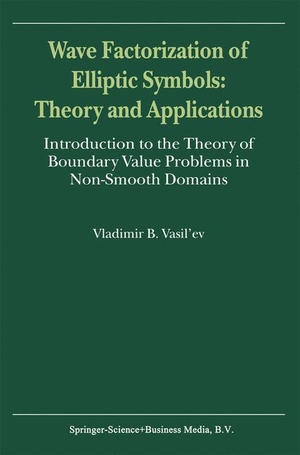Für statistische Zwecke und um bestmögliche Funktionalität zu bieten, speichert diese Website Cookies auf Ihrem Gerät. Das Speichern von Cookies kann in den Browser-Einstellungen deaktiviert werden. Wenn Sie die Website weiter nutzen, stimmen Sie der Verwendung von Cookies zu.
Cookie akzeptieren
V. Vasil'Ev
Wave Factorization of Elliptic Symbols: Theory and Applications
- Springer Netherlands
- 2000
- Gebunden
- 192 Seiten
- ISBN 9780792365310
To summarize briefly, this book is devoted to an exposition of the foundations of pseudo differential equations theory in non-smooth domains. The elements of such a theory already exist in the literature and can be found in such papers and monographs as [90,95,96,109,115,131,132,134,135,136,146, 163,165,169,170,182,184,214-218]. In this book, we will employ a theory that is based on quite different principles than those used previously. However, precisely one of the standard principles is left without change, the "freezing of coefficients" principle. The first main difference in our exposition begins at the point when the "model problem" appears. Such a model problem for differential equations and differential boundary conditions was first studied
Mehr
Weniger
zzgl. Versand
in Kürze